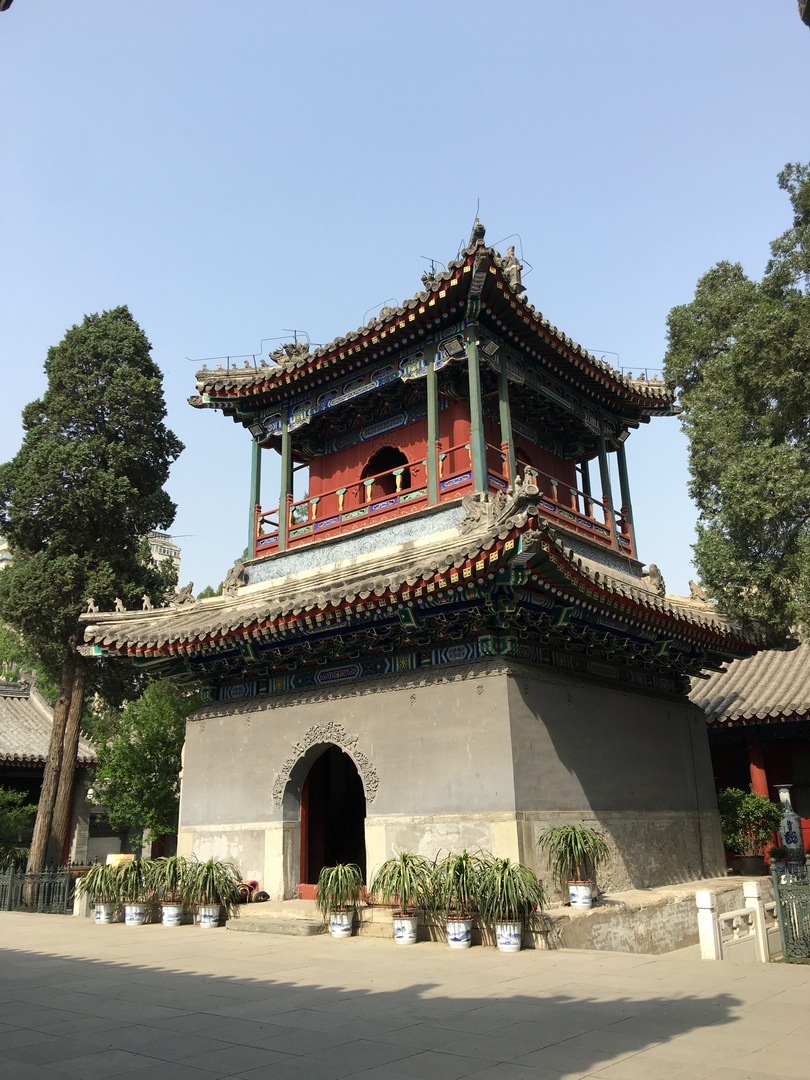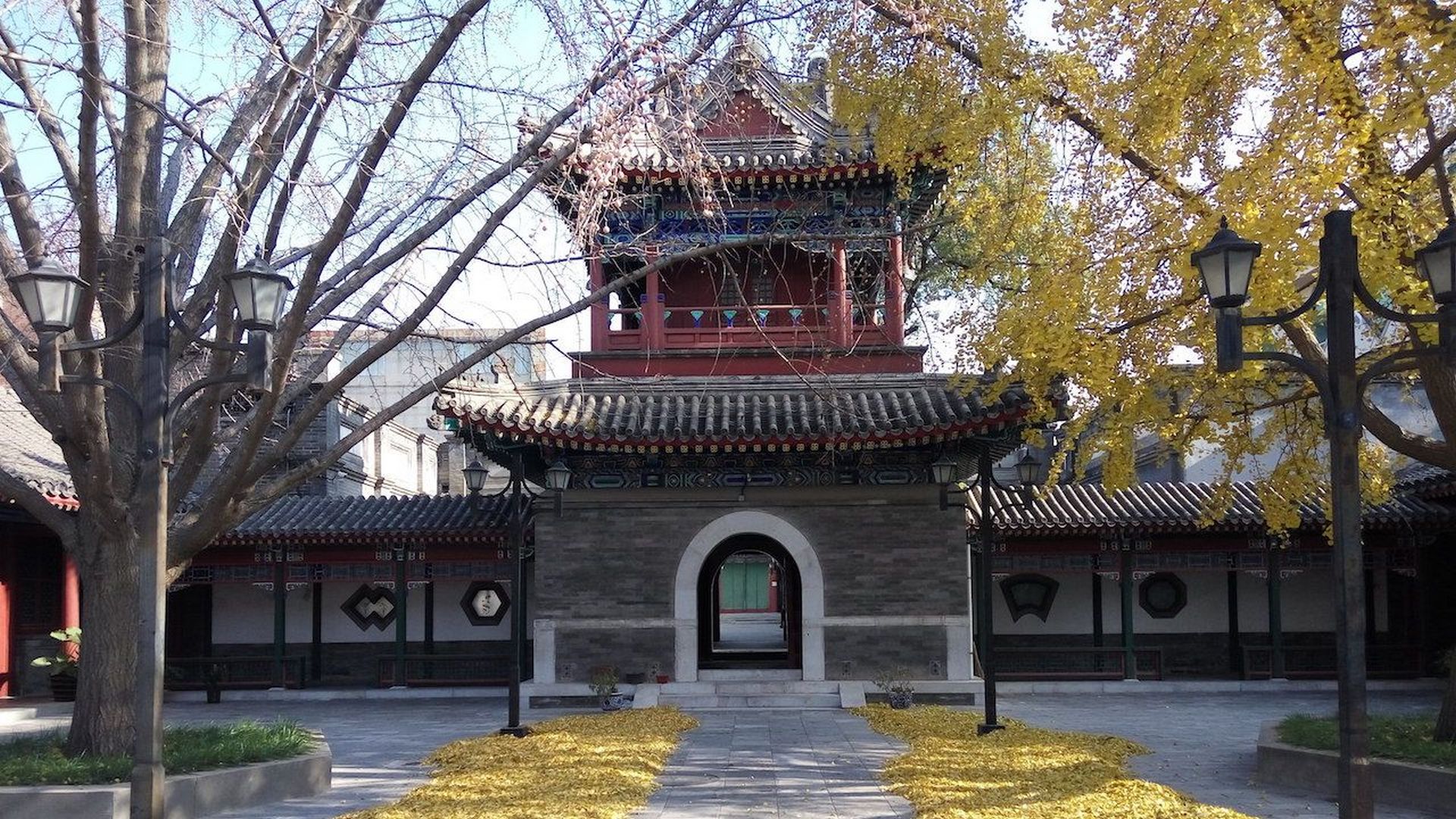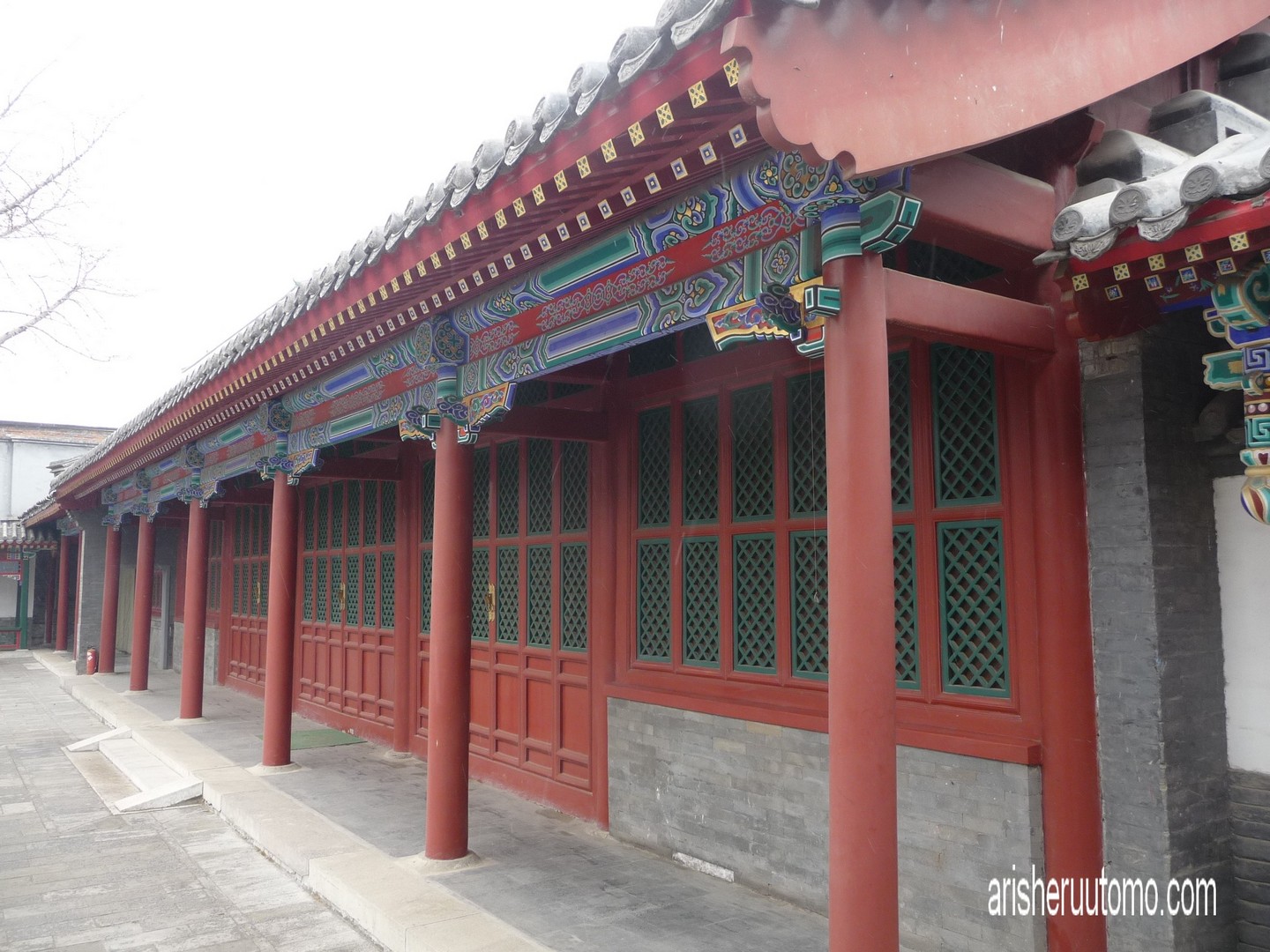Description
Property Name: Dongsi Mosque
Inventory No: 86-10-2
Date of infill of the inventory form: 2009-08-21
Country (State party): China
Province: Beijing
Town:
Geographic coordinates: 38° 55′ 20.67″ N
116° 24′ 38.58″ E
Historic Period: 14th century, 2nd half
Year of Construction: 1356
Style: Hui
Original Use: Mosque
Current Use: Mosque
Architect: Unknown
Significance
The Dongsi Mosque, in Beijing is presumed to be the oldest mosque in Beijing. It is an important pilgrimage place for prayers in Beijing. Especially on important occasions like Id al-Filtr (the end of Ramadan) and Id al-Adzha (Qurban Bairam) the prayer hall accommodates 500 people. Although Dongsi Mosque, associates a small and a modest mosque from outside, it is important as being the largest one in Beijing. The Mosque is also significant with its library hosting many valuable writings and texts of Qur’an, the Haidth (oral traditions relating to the words and deeds of the Prophet), Islamic philosophy works, history and literature works including Islamic classics and many other works of Egypt, India, Turkey and Pakistan. Today, the mosque is the headquarters of the Islamic Association of Beijing.
Selection Criteria
ii. to exhibit an important interchange of human values, over a span of time or within a cultural area of the world, on developments in architecture or technology, monumental arts, town-planning or landscape design
v. to be an outstanding example of a traditional human settlement, land-use, or sea-use which is representative of a culture (or cultures), or human interaction with the environment especially when it has become vulnerable under the impact of irreversible change
State of Preservation
The mosque was known to be built first in 1356, during Yuan Dynasty. There are claims about the mosque’s first construction date as 1400’s, during Ming Dynasty. However the mosque has been undergone some restorations and renovations as the government provided funds. In 1952 and 1974, interventions have taken place within the complex. The main prayer hall is the only original structure from Ming Dynasty, but after many years of neglect, the structure has been restored. Some features in the complex are missing or ruined. The mihrab does not exist and is thought to be missing. There has been some repainting and in the place of where the madrasa was once standing, a double floor dormitory building is erected.
The muezzin’s tower (minaret) is a result of reconstruction, based on the design of Niujie Mosque (Ox Street Mosque, Beijing) but the original design and the relics of Niujie Mosque is also not definite. On the top of this tower of Dongsi Mosque, a knob was placed. This knob had been stored at the mosque for about a century and the original place of the brass knob was unknown. The Research Centre for Traditional Architecture of the Beijing City Cultural Relics Office defined the knob as the crown of the Muezzin’s Tower of Ming Dynasty period.
Briefly the Mosque Complex has gone under some interventions and some details have been changed; but the cultural relics are well preserved in the mosque.
References
The Official website of Beijing Government; http://www.ebeijing.gov.cn ,
The website of China Heritage; http://www.chinaheritagequarterly.org ,
The website of China Culture; http://www.chinaculture.org ,
WIAS Group2. sent SATO Minoru, a Research Affiliates, to China for Collecting Documentation on Huiru’Chinese Muslim Scholar’ in Beijing.(retrieved from the website of http://www.islam.waseda.ac.jp)




